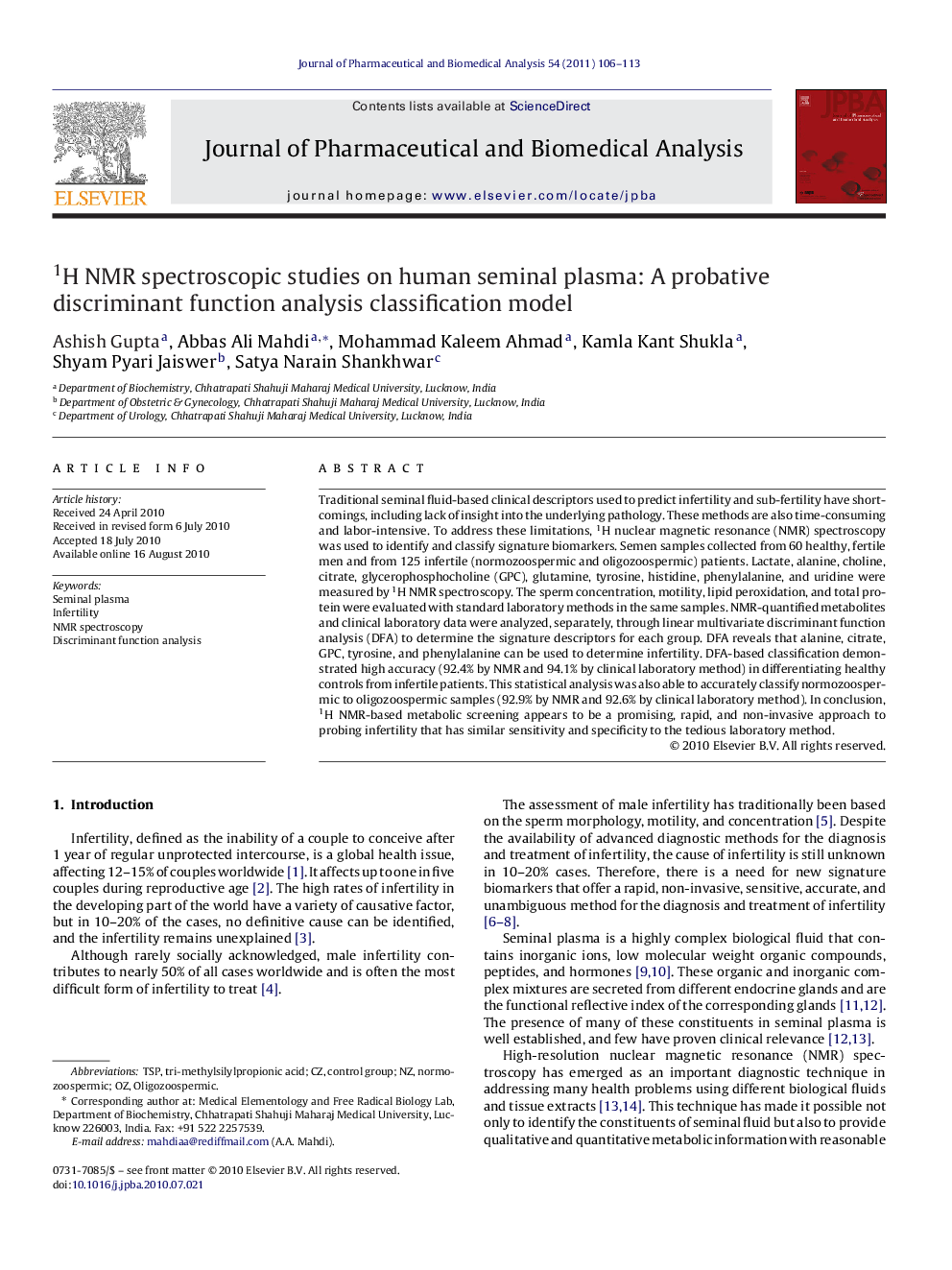| Article ID | Journal | Published Year | Pages | File Type |
|---|---|---|---|---|
| 1221615 | Journal of Pharmaceutical and Biomedical Analysis | 2011 | 8 Pages |
Traditional seminal fluid-based clinical descriptors used to predict infertility and sub-fertility have shortcomings, including lack of insight into the underlying pathology. These methods are also time-consuming and labor-intensive. To address these limitations, 1H nuclear magnetic resonance (NMR) spectroscopy was used to identify and classify signature biomarkers. Semen samples collected from 60 healthy, fertile men and from 125 infertile (normozoospermic and oligozoospermic) patients. Lactate, alanine, choline, citrate, glycerophosphocholine (GPC), glutamine, tyrosine, histidine, phenylalanine, and uridine were measured by 1H NMR spectroscopy. The sperm concentration, motility, lipid peroxidation, and total protein were evaluated with standard laboratory methods in the same samples. NMR-quantified metabolites and clinical laboratory data were analyzed, separately, through linear multivariate discriminant function analysis (DFA) to determine the signature descriptors for each group. DFA reveals that alanine, citrate, GPC, tyrosine, and phenylalanine can be used to determine infertility. DFA-based classification demonstrated high accuracy (92.4% by NMR and 94.1% by clinical laboratory method) in differentiating healthy controls from infertile patients. This statistical analysis was also able to accurately classify normozoospermic to oligozoospermic samples (92.9% by NMR and 92.6% by clinical laboratory method). In conclusion, 1H NMR-based metabolic screening appears to be a promising, rapid, and non-invasive approach to probing infertility that has similar sensitivity and specificity to the tedious laboratory method.
